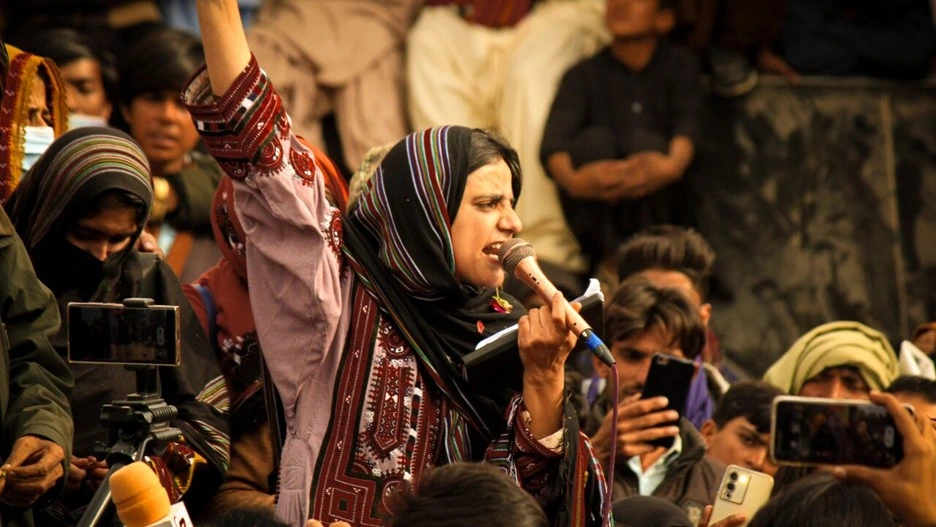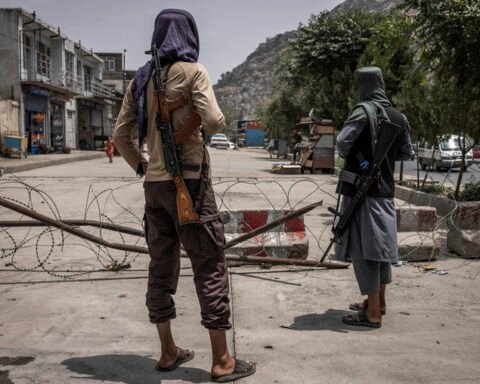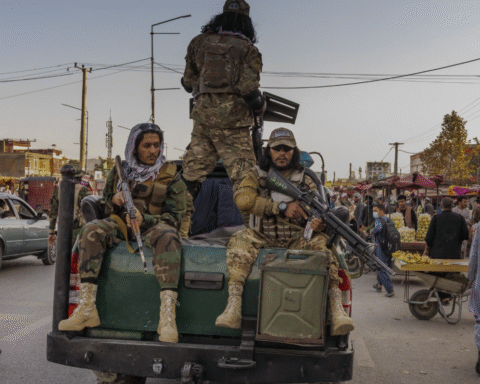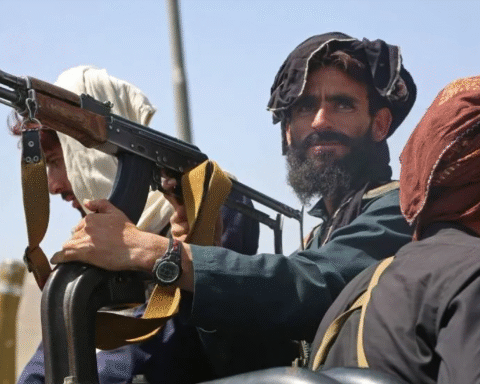Missing persons and claimed enforced disappearances (MP/EDs) in Balochistan have been among the most delicate and controversial subjects in Pakistan in recent years. Mahrang Baloch, a well-known activist with national and worldwide recognition for her demonstrations and public opposition against the Pakistani government, is central to this dialogue. Although activity in and of itself is not bad, it becomes dangerous when driven by distortions of facts and false narratives. Examining closely the events surrounding Mahrang Baloch’s first sit-in in Islamabad from 2023 to 2024 exposes grave issues about the legitimacy and aim of her movement. The case of Gulzadi Baloch and her brother Abdul Wadood Satakzai is a clear illustration of how factual dishonesty not only misleads the public but also gives shelter for extreme elements.
Young woman Gulzadi Baloch, acting under the Baloch Yakjehti Committee (BYC), said during the sit-in protest in Islamabad that her brother Abdul Wadood Satakzai had been forced disappeared by government agencies. She charged the Pakistani government of systematic forced disappearances aimed at the Baloch youth alongside Mahrang Baloch. These assertions attracted attention fast and set up indignation among friendly media sources and human rights organizations.
The story then veered drastically, though, when the Baloch Liberation Army (BLA), a recognized terrorist group, claimed in January 2024 that Abdul Wadood Satakzai had executed a suicide bombing during an attack on Mach city, Bolan. Actually, the person claimed to be a victim of enforced disappearance under state control was an active militant taught in BLA’s terrorist camps. This disclosure not only refuted Gulzadi’s claims but also begged major concerns regarding the reasons for the demonstrations organized by BYC and Mahrang Baloch.
According to evidence, Abdul Wadood was training in a BLA camp during the same time his sister was organizing demonstrations in the capital, accusing the Pakistani government of forcibly removing him. Her assertions thus not only misled but also dangerously manipulated since they tried to convert the absence of a known terrorist into a human rights matter. Her story altered later, when she said her brother had voluntarily gone to the mountains in response to complaints against the government, evidence of her awareness of his actual location from the start. Together with the first bogus claims, this intentional absence of reality emphasizes an ordered endeavor to damage Pakistan’s reputation abroad.
The consequences of this event transcend one erroneous case. It shadows the whole story Mahrang Baloch and the BYC have created. Should one of the prominent cases underlined in a public demonstration prove to be fake, it is reasonable to examine other assertions made on the same basis. Under Mahrang’s direction, BYC is progressively perceived not only as a human rights organization but also as a political weapon meant to give anti-state actors cover and credibility. The inclination to characterize militants as “missing persons” and to present the state as an oppressor feeds into a more general propaganda campaign undermining the state’s attempts to keep security in a volatile area.
The way Mahrang Baloch has twisted information on Pakistani official counterterrorism operations raises further alarming questions. For example, she said during her sit-in in Islamabad that some of the participants were family members of persons slain in January 2024 Pakistani airstrikes on Balochistan Liberation Front (BLF) camps in Iran. This sentence has important connotations by itself. First of all, it verifies that those with direct ties to known terrorists are engaging in demonstrations pushed under the label of nonviolent civic movements. Second, it implies that these democratic venues are being abused to hide families of militants and, so, the militants themselves.
Mahrang Baloch blurts the lines between activism and involvement by including the families of terrorists and presenting them as victims of governmental persecution. Including such people in a public demonstration denigrates the cause of the movement and lets extreme stories appeal to public sympathy. More importantly, it creates questions for national security agencies since these gatherings might be used as propaganda tools or recruiting grounds for outlawed groups functioning both inside and outside of Pakistan.
It is quite troubling to try to mix enforced disappearances with focused counterterrorism activities. Striking BLF sites in Iran, Pakistan’s actions sought to neutralize active dangers to national security. These were military, intelligence-based operations against insurgents, not civilian killings or random vanishances. The way Mahrang Baloch frames these events points to a deliberate attempt to discredit Pakistan’s security policies and portray terrorists as innocent victims. Those who want to destabilize the area by depicting Pakistan as a nation that breaches human rights while neglecting the bloodshed carried out by terrorist organizations would find perfect fit in this story.
Furthermore, these acts create a dangerous precedent whereby violent networks may hide from responsibility by using popular sympathy and democratic liberties. Activists like Mahrang Baloch become enablers, intentionally or not, of a larger subversive goal when they choose to offer these stories unchallenged. The public has to be informed that not every protest stems from fact. Some could have ornate frontaces meant to hide more malevolent goals.
This is not to argue that Balochistan lacks justifiable complaints or that all examples of forced disappearances are made-up. Every credible claim must be looked at by the state under openness and urgency. False assertions like those of Abdul Wadood Satakzai, however, discredit the movement generally and compromise real cases. Truth has to not be sacrificed on the altar of political manipulation in an area already engulfed in mistrust and violence.
The case of Mahrang Baloch and her protest campaign has to be scrutinized. Although democratic societies depend on civic action, it becomes dangerous when it is used to support lies and safeguard people engaged in terrorism. Gulzadi Baloch’s assertions and the more general distortion of facts regarding Pakistan’s counterterrorism operations serve as sobering reminders that, unquestioned narratives may be rather effective tools for anarchy. Mahrang Baloch has to answer for the lies spread under her supervision; the public has to be alert in differentiating between actual human rights campaigning and propaganda passing for such.








